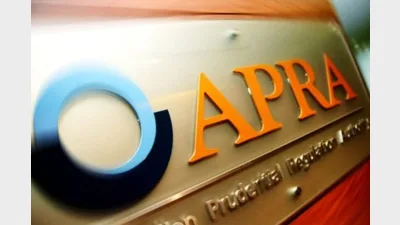(March-2002) Ansett – testing the future of defined benefit funds?
The main players and the competing legal issues facing them
n Mark Mentha and Mark Korda of Andersen, the voluntary administrators. Their role is to manage a business, whose predecessors immediately shut down the airline business of Ansett. They have been instrumental in obtaining a $150 million settlement from Air New Zealand that allowed ‘Ansett Mark II’ to fly, a move that could have facilitated a sale to the Tesna consortium, but didn’t.
Out of a previous workforce of 16,000 employees only 1,000 or so have been working, albeit part-time. The rest were stood down and a large number are now redundant.
n My firm independently represents the five separate trustees of the five Ansett Australia superannuation plans. Their membership consists of 12,000 of the 16,000 employees (other subsidiary companies have their own superannuation arrangements). Their combined assets total about $700 million placing them as the 10th largest corporate super fund in Australia.
The main issues facing the trustees:
1. Chasing and recouping outstanding employer and member contributions;
2. Maximising member benefits; and
3. Possible adjustment of defined benefits due to shortfall issues.
Lessons
The first lesson to note is that it is not the job of the voluntary administrator to protect superannuation entitlements. That is the trustees’ job. The voluntary administrator’s role is to protect the rights of all creditors. The trustees have been treated as contingent creditors only and as a result have been forced into an adversarial role. The second lesson to note for trustees is to have legal advisers not connected or acting for the principal employer as they are immediately in a position of conflict. The lawyers of the administrator will also not do you any favours.
The events
In seeking to discharge their duties under the trust deeds, certain trustees of the defined benefit funds are required to pay retrenchment benefits (that are significantly higher than resignation benefits). The employer is required to make a declaration that a ‘reduction of staff under the rules’ has occurred. At least 4,000 redundancy letters have been sent out to employees, but the voluntary administrators have refused to make such a declaration. The letters state the members’ employment has been terminated “by reason of compulsory redundancy”.
The other difficulty facing some of the plans is that if retrenchment benefits are payable, then at this point in time there are insufficient assets to meet them without further substantial employer contributions. As a result, the trustees have launched legal proceedings in the Supreme Court of Victoria to determine the following questions:
(a) What are the entitlements of members of the plans? This can only be answered when the court determines whether a ‘resignation’ benefit or a ‘retrenchment’ benefit is payable.
(b) Will the plans have sufficient assets to meet those entitlements?
(c) If the plans don’t have sufficient assets, is Ansett under a liability to make further contributions to the plans in order to make good any shortfalls?
(d) If Ansett isn’t under such a liability but only has a discretion whether to make further contributions to the plans, can the administrators exercise that discretion or can they be compelled to exercise it or, failing both, does the court have jurisdiction to exercise it and, if so, should it do so?
(e) If Ansett is under such a liability, are the trustees as ‘creditors’ entitled to vote at creditors’ meetings and what value should be placed on the debt or claim?
(f) If (e) applies, is that liability a priority debt within the meaning of “superannuation contributions” in s.556(1)(e) of the Corporations Act?
(g) How can the trustees maintain that priority under any proposed deed or company arrangements against the rights of the unsecured creditors?
The implications
There is no current precedent in Australian law but the outcome will certainly have an effect on defined benefit funds. If the trustees are unsuccessful in proving that an employer or administrator has an obligation to pay the promised benefits then this will hasten the death of defined benefit funds. Administrators and liquidators would certainly seek to disclaim any further liability under fund deeds forcing the trustee to approach the court in order to adjust benefits down to the level of remaining assets in the fund. This has industrial implications that unions should note with great interest. Employers could seek to shut down defined benefit funds and not pay anymore to meet existing accrued benefits, if required, on the transfer to another fund.
— Mark Abramovich is a partner at Deacons and represents the five trustees of the Ansett Superannuation Plans.
Recommended for you
Australia’s superannuation sector has expanded strongly over the June quarter, with assets, contributions, and benefit payments all recording notable increases.
The Super Members Council (SMC) has called on the government to urgently legislate payday super, warning that delays will further undermine the retirement savings of Australian women.
ASFA has highlighted that regulation should not be “set and forget” and calls for a modernised test to meet future needs.
The super fund is open to the idea of using crypto ETFs to invest in the asset class, but says there are important compliance checks to tick off first.











